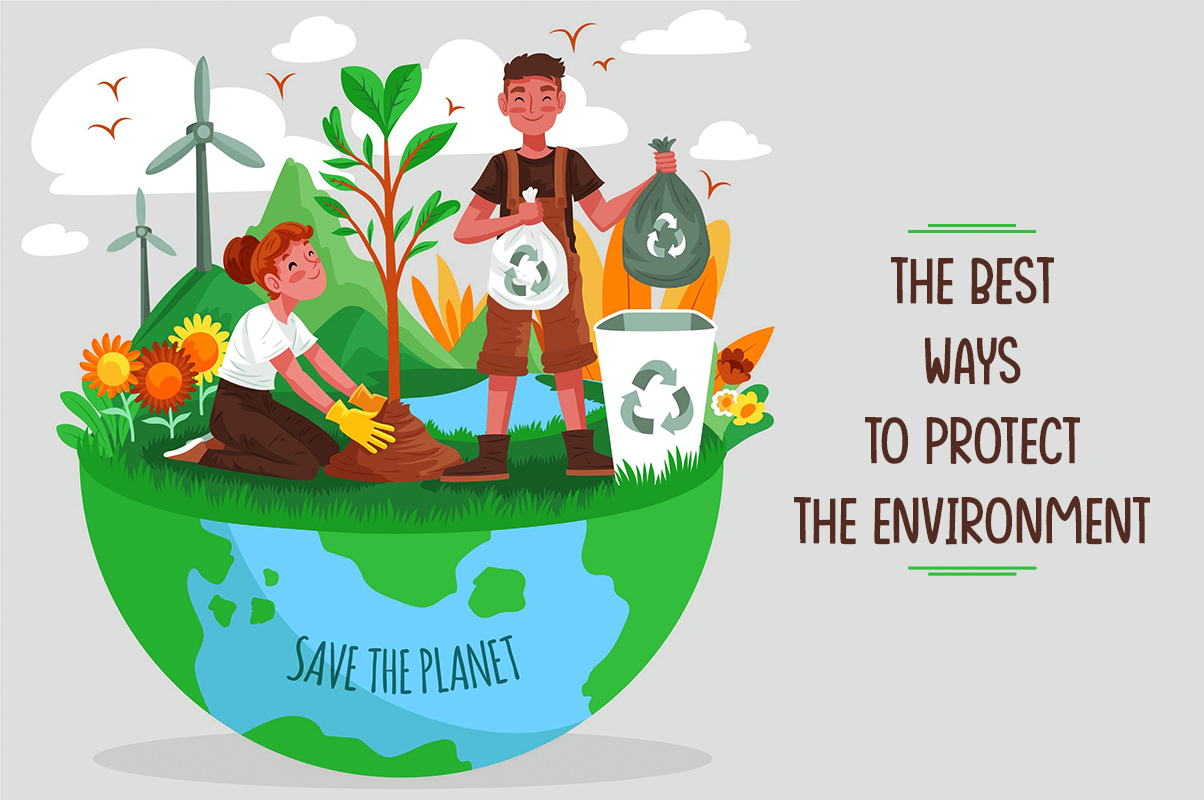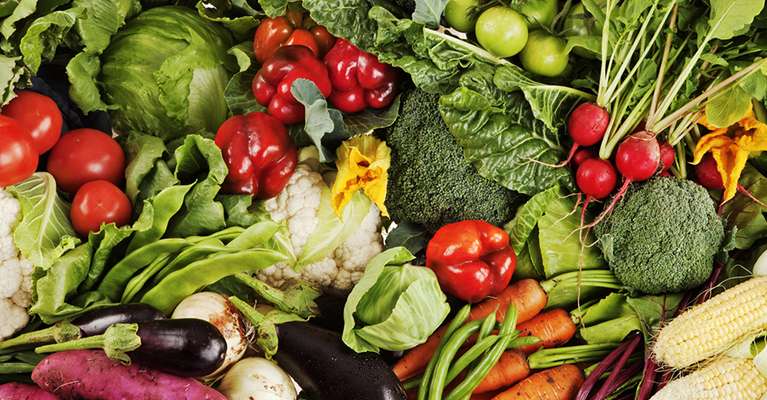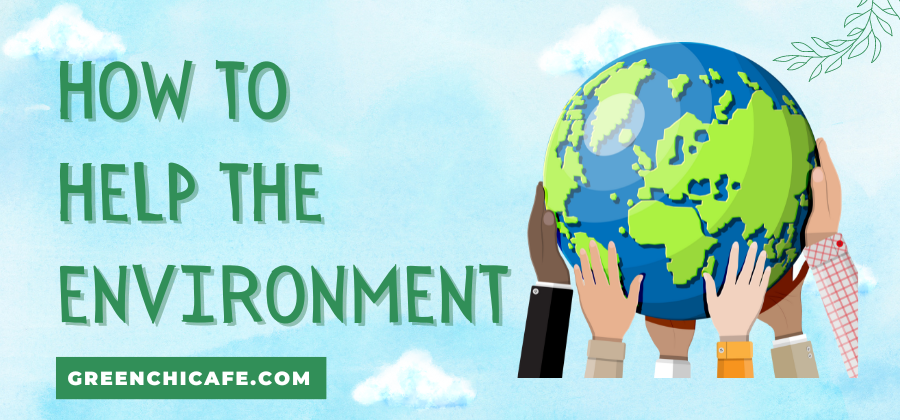The environment needs our help more than ever.
Small everyday actions can add up to make a big difference.
Read on to discover simple and impactful ways we can all help protect the planet.
How to Help the Environment?

The health of our environment influences human health and well-being.
By taking steps to care for the planet, we also create a better future for ourselves and generations to come.
Even small acts like recycling and saving energy can reduce greenhouse gas emissions, conserve natural resources, and prevent pollution when multiplied by millions of people.
Together our choices and actions have the power to drive positive environmental change.
Key Points
- Recycling, energy conservation, mindful consumption, and advocacy to protect natural resources and combat pollution.
- Individual lifestyle changes multiply collectively to drive systemic environmental change.
- Supporting eco-friendly legislation and policies accelerates progress through political will and regulation.
How to help the environment? Why is helping the environment important?
Preserving the environment is crucial for sustaining life on Earth.
Human activities like burning fossil fuels, deforestation, and pollution have pushed many ecosystems to the brink.
Helping the environment can turn the tide on issues like climate change, habitat destruction, and the loss of biodiversity.
It allows us to pass on a healthy planet to future generations.
Even small acts add up, so do your part to protect the air, land, water, and climate.
Our individual choices make a difference.
How does recycling help the environment?
Recycling prevents the waste of potentially useful materials, reduces the consumption of new raw materials, and decreases pollution associated with waste disposal.
It saves energy and water resources while lowering greenhouse gas emissions from the production of new products.
Recycling things like paper, plastic, glass, and metal reduces the amount of waste sent to landfills and incinerators.
It also conserves forests, water, and minerals that would otherwise be used to produce new materials.
You can make a meaningful impact by consistently recycling at home, at work, and on the go.
How can you reduce your carbon footprint?
Your carbon footprint represents the amount of carbon dioxide released due to your activities.
To shrink your carbon footprint, conserve energy at home by turning off lights, adjusting the thermostat, and unplugging devices when not in use.
Walk, bike, and use public transportation to cut back on driving.
Reduce airline travel and opt for video conferencing instead.
Eat less meat and choose local sustainable food. Shop mindfully, buying only what you need.
Purchase energy-efficient appliances and solar panels. Support companies committed to environmental sustainability.
Every choice makes an incremental difference that benefits the climate.
What are easy ways to conserve water at home?
With water scarcity a growing concern, we must use this precious resource thoughtfully.
Easy ways to conserve water include turning off the faucet while brushing your teeth, shaving, washing dishes, and lathering up.
Take shorter showers.
Fix leaks immediately. Install low-flow showerheads and toilets.
Run full loads in the washing machine and dishwasher.
Choose to xeriscape utilizing native plants to reduce outdoor watering.
Collect rain in barrels. Be mindful of your water use and wastage.
Small daily actions to save water alleviate the strain on reservoirs and groundwater supplies.
How can you prevent air pollution?
Air pollution harms human health and the environment.
To help curb air pollution, walk, cycle or take public transport instead of driving.
Carpool if you must drive.
Maintain your car properly through tune-ups and checking tire pressure.
Avoid idling your vehicle when stopped.
Conserve energy to reduce reliance on fossil fuels.
Support transitioning to clean renewable energy.
Choose non-toxic eco-friendly cleaners and paints to decrease VOC emissions.
Grow indoor and outdoor plants that purify the air.
Follow regulations limiting emissions.
Help spread awareness about sources of air pollution and their dangerous impacts.
Our choices can lessen air pollution when multiplied collectively.
What household items can you repurpose or reuse?
Being resourceful has environmental benefits.
Many household items can be repurposed or reused in creative ways.
For example, worn sheets and towels can become rags.
Jars and bottles transform into organizers or vases.
Wooden pallets turn into furniture.
Coffee grounds fertilize plants.
Old clothes become cleaning clothes or get upcycled into new creations.
Canvas bags replace plastic ones.
Scraps turn into compost. Old trophies morph into planters.
With a little creativity, products continue providing value instead of prematurely ending up in landfills.
How does reducing food waste help the environment?
Roughly one-third of food produced globally for human consumption gets lost or wasted annually.
Food waste contributes significantly to greenhouse gas emissions through the production and distribution of uneaten food.
Preventing food waste conserves the water, land, and energy resources that go into growing, processing, packaging, and transporting discarded food.
Start by buying only what you need.
Store food properly to maximize freshness.
Eat leftovers and repurpose scraps.
Share surplus food.
Compost if possible.
Reducing food waste decreases methane emissions from landfills and makes the food system more efficient and sustainable.
How can you make sustainable food choices?

Sustainable food production protects the health of people, animals, and the planet.
To make eco-friendly food choices, eat more fruits, vegetables, and whole grains.
Reduce meat consumption by trying Meatless Mondays.
Choose organic, local, and seasonal when possible to cut down on pesticides and transportation emissions.
Avoid highly processed foods with excessive packaging.
Patronize farmer’s markets, food co-ops, and sustainable grocers.
Grow some of your food.
Read labels and select sustainably sourced seafood, coffee, and chocolate certified by eco-labels.
Before you eat, think about how your food choices impact the environment.
How can you make sustainable fashion choices?
The fashion industry places strain on the environment through textile production, manufacturing, and waste.
To lessen the footprint of your wardrobe, invest in quality garments built to last.
Thrift, swap and repurpose existing clothing.
Look for organic, ethical brands using eco-friendly practices.
Wash clothes less frequently in cold water and air dry when possible.
Properly care for items to extend their lifespan.
Avoid fast fashion, excessive consumption, and garments made from petroleum-based synthetics.
Think twice before ordering online to reduce packaging and transport emissions.
Make informed purchases aligned with your values.
How can you be an environmental advocate?
Beyond individual actions, advocating for systemic change is crucial.
Being an environmental advocate can entail volunteering with or donating to eco-organizations.
Contact government representatives to share your concerns and priorities regarding environmental policies.
Attend rallies and protests supporting sustainability.
Use social media to raise awareness about environmental injustice.
Talk to family and friends to expand consciousness.
Start a petition. Switch your bank and investments to support green causes.
Join citizens groups organizing around environmental issues important to you.
Every voice matters in shifting public opinion to build momentum for the planet.
How to Help the Environment?
What Could You Do to Help the Environment?
There are countless ways we can help protect the planet through our daily actions. Here are some impactful ideas:
- Firstly, make sustainable food choices. Eat less meat, choose organic, shop at farmers’ markets, grow your fruits and vegetables, reduce food waste, compost, and read labels to support ethical producers. Our food choices have ripple effects on water use, land conservation, greenhouse gas emissions, and more.
- Secondly, walk, bike, carpool or take public transportation to reduce your carbon footprint from driving. If you must drive, maintain your car and avoid idling to lessen emissions. Travel thoughtfully by reducing flights that have a large climate impact. Consider carbon offsets to help finance sustainability initiatives.
- Thirdly, save energy at home and work by adjusting the thermostat, turning off lights, unplugging devices, upgrading to LED bulbs, and utilizing power strips. Ask your employer about green office policies. Support the transition to renewable energy sources like solar and wind. Home upgrades enhance efficiency and cut utility bills.
Additionally, conserve water diligently by fixing leaks, installing efficient appliances and low-flow fixtures, taking shorter showers, and reducing usage while brushing teeth, shaving, doing dishes, and cleaning.
Simple daily actions multiply to create a meaningful impact.
Grow drought-tolerant landscaping that requires less watering.
How to Help the Environment: 30 Impactful Ways
There are endless ways to minimize our environmental footprint through conscious lifestyle and consumption choices.
Here are 30 impactful actions:
- Recycle paper, plastic, glass, and metal consistently
- Use reusable bags, bottles, containers and coffee mugs
- Conserve energy – turn off lights and adjust the temperature
- Take public transport, walk, bike or carpool more
- Combine errands to reduce driving trips
- Maintain your vehicle – check tire pressure, tune-ups
- Reduce air travel and select direct flights
- Upgrade appliances, electronics, and lighting to energy-efficient models
- Install solar panels and purchase clean energy
- Fix water leaks, install low-flow fixtures, take shorter showers
- Grow native plants appropriate for your region
- Start a compost pile for food scraps
- Reduce meat consumption and increase plant-based foods
- Choose organic, local, seasonal produce
- Shop at farmers’ markets and food cooperatives
- Bring reusable containers and bags when shopping
- Avoid single-use plastics – straws, bags, bottles, packaging
- Read labels and support eco-conscious brands
- Donate, thrift, repair, and repurpose when possible
- Rent, lease, share, or borrow items used infrequently
- Purchase high-quality, durable goods built to last
- Properly recycle electronics and hazardous waste
- Use non-toxic cleaners and environmentally friendly products
- Line-dry clothing and towels to conserve energy
- Wash clothes in cold water, air dry when possible
- Advocate for environmental policies and regulation
- Volunteer or donate to an eco-friendly charity
- Join a local environmental or conservation group
- Talk to friends and family to raise awareness
- Follow an eco-friendly lifestyle and be a role model
When we each do our part, no matter how small, it adds up to an extraordinary collective impact.
Our actions matter!
In Conclusion
Helping the environment may seem daunting, but it is possible through simple lifestyle choices and advocacy.
Recycle, conserve resources, reduce waste, make sustainable purchases, spread awareness, and support larger change.
Small consistent actions to care for the planet make an exponential impact.
Together our collective efforts can create a flourishing future.
Frequently Asked Questions
What are five sustainable swaps to help the environment?
- Reusable bags instead of plastic
- Rechargeable batteries instead of disposables
- Bamboo utensils instead of plastic
- Mason jars and glass containers instead of plastic
- Reusable water bottle instead of disposable plastic
How can kids help protect the environment?
- Turn off lights and electronics when not in use
- Take shorter showers to conserve water
- Walk or bike instead of driving
- Use both sides of the paper before recycling
- Help plant trees and gardens
- Pack waste-free lunches
What companies are eco-friendly?
- Patagonia – sustainable clothing and gear
- Seventh Generation – non-toxic cleaning and personal care
- Alter Eco – fair trade and organic foods
- Tesla – electric vehicles
- IKEA – affordable eco-furnishings
- Beyond Meat – plant-based meat alternatives
GreenChiCafe is passionate about the environment and our natural world. Please check out our website for more content on living sustainably and protecting our planet.

Annie is a passionate environmental writer and activist. She has been writing about sustainability, conservation, and green living for over 15+ years. Annie is dedicated to raising awareness about environmental issues and providing practical tips for living an eco-friendly lifestyle. When she’s not writing, you can find her volunteering with local environmental organizations, teaching workshops on zero waste living, or exploring nature. Feel free to get in touch with Annie: annie@greenchicafe.com
